Complete Guide to Lawn Aeration: Understanding the Basics
Lawn aeration is an essential practice and crucial for maintaining a thriving turf. Understanding the basics involves recognizing the symptoms of soil compaction, a common plight where the soil becomes overly dense, restricting nutrient, water, and air flow to the grassroots. During aeration, small plugs of soil are removed, or holes are made to alleviate this compaction. It’s a fundamental step to ensure your lawn’s health and resilience. Regularly aerating helps to enhance root growth and improves the soil structure, leading to a more robust and lush lawn. As a core component of maintenance, aeration should be carried out during the growing season when the grass can heal and fill in any open areas after soil plugs are removed. At Turf Medic, we understand that you might not know whether it’s the right time to aerate or what tools are best for the job. That’s where we step in—providing professional insight and services to make lawn care easy and effective for you. Remember, a well-aerated lawn is the cornerstone of a beautiful landscape, and knowing the basics paves the way for advanced care.
Everything You Need to Know About Aeration Tools for Lawn Care
When it comes to cultivating a lush and healthy turf, understanding the tools for lawn aeration is crucial. A core aerator is one of the most efficient lawn aerators available, and it’s integral to the process of core aeration, which involves removing small plugs of soil to improve air, water, and nutrient penetration. It’s a technique favored by lawn care pros and is particularly effective at alleviating soil compaction. There are different types of lawn aerators, including spike aerators and slicing aerators, but a core aerator truly stands out by allowing your lawn to breathe and grow more vigorously.
The use of an aerator, when done correctly, enhances root growth and bolsters the overall health of your grass. Whether you’re a homeowner or a lawn care aficionado, owning the right tools will enable you to maintain an enviable yard. While manual aerators are great for small patches, a motorized aerator might be necessary to expedite the process over larger lawns. Regardless of the size of your property, regular lawn aeration is a pivotal step in routine lawn care, and employing the right aerators can make all the difference in achieving that ever-desirable, immaculate green space.
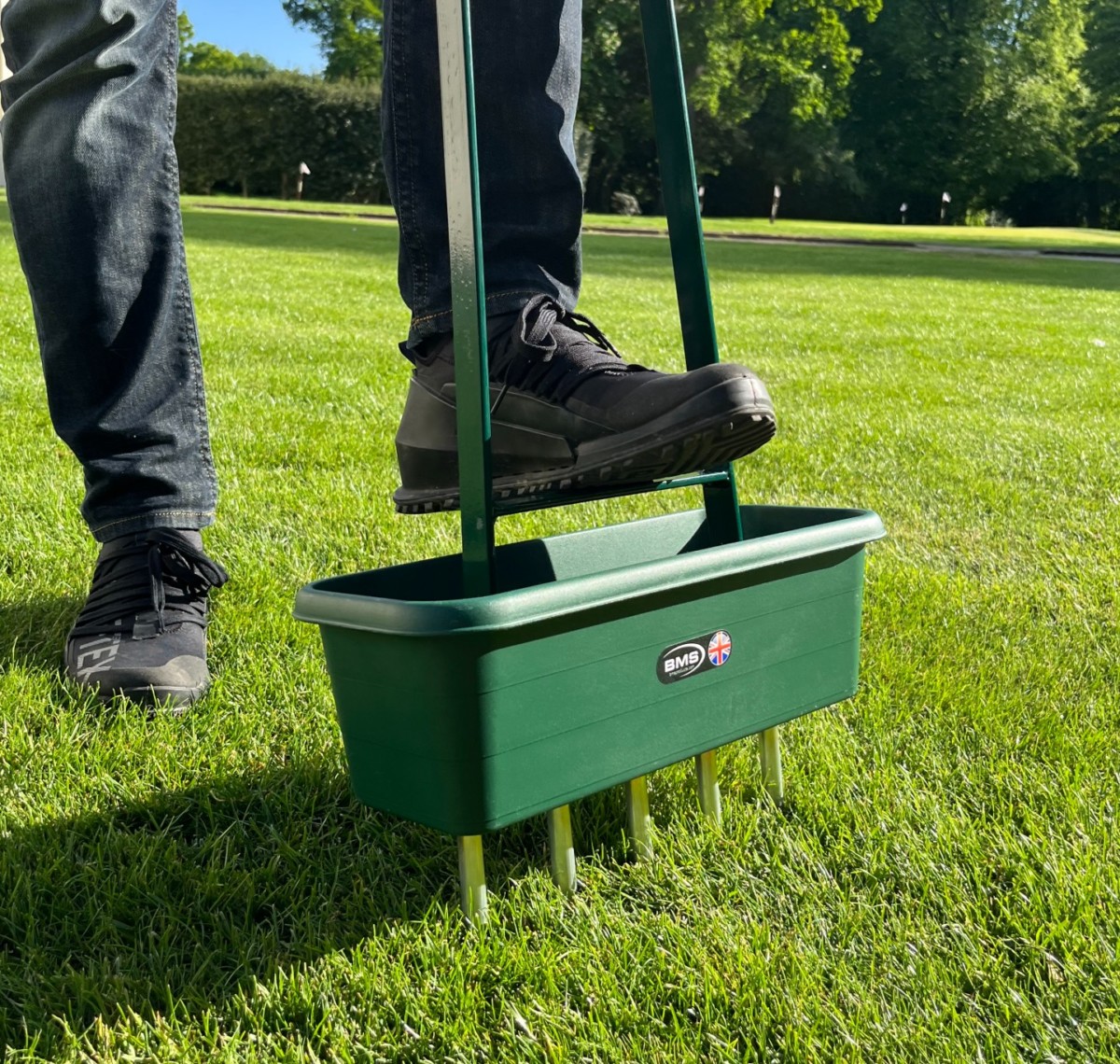
The Science Behind Lawn Aeration
In the world of lawn care, understanding the science behind lawn aeration is essential to maintaining a healthy and vibrant yard. At its core, aeration addresses the problem of soil compaction, which restricts the flow of air, water, and nutrients to the lawn’s roots. Soil becomes compacted over time due to foot traffic, lawn equipment, and even the weight of the soil itself, which can impede your lawn’s ability to thrive.
Lawn aerators are specialized tools designed to remediate this by creating tiny holes—or cores—in the lawn to facilitate the movement of air, water, and nutrients. These perforations enable easier penetration of these essential elements, rejuvenating the soil’s ecosystem by providing the necessary room for the roots to expand and allowing microbes to process organic material effectively.
Whether it’s water absorption or the breakdown of thatch, aeration is an indispensable practice that ensures your lawn can access what it needs from its environment. Using a variety of lawn aerators, from spike aerators to core aerators, can make a significant difference in the health and appearance of your lawn. By incorporating lawn aeration into your regular lawn care routine, you’ll promote a more resilient and lush landscape, equipped to manage stress and ward off diseases. Remember, aeration isn’t just poking holes in the ground—it’s about fostering an ideal environment for your soil and grass to prosper together.
Top 7 Reasons for Aerating Your Lawn
1. Improves Air Exchange: Aeration helps increase the flow of air to the soil and grass roots, promoting healthier growth by allowing roots to breathe more easily.
2.Enhances Water Uptake: Aerating your lawn reduces water runoff and improves the absorption of water, ensuring your grass gets the moisture it needs.
3. Boosts Fertilizer Utilization: By creating openings in the soil, aeration allows fertilizers to penetrate more effectively, delivering nutrients directly to the roots.
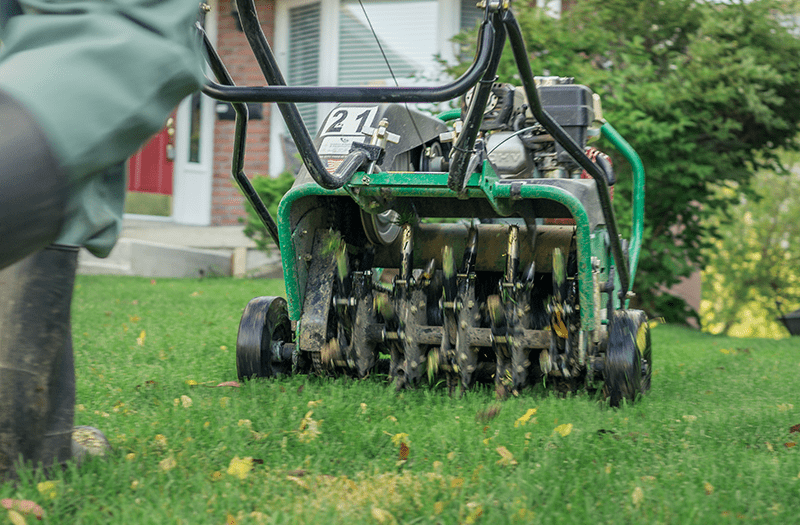
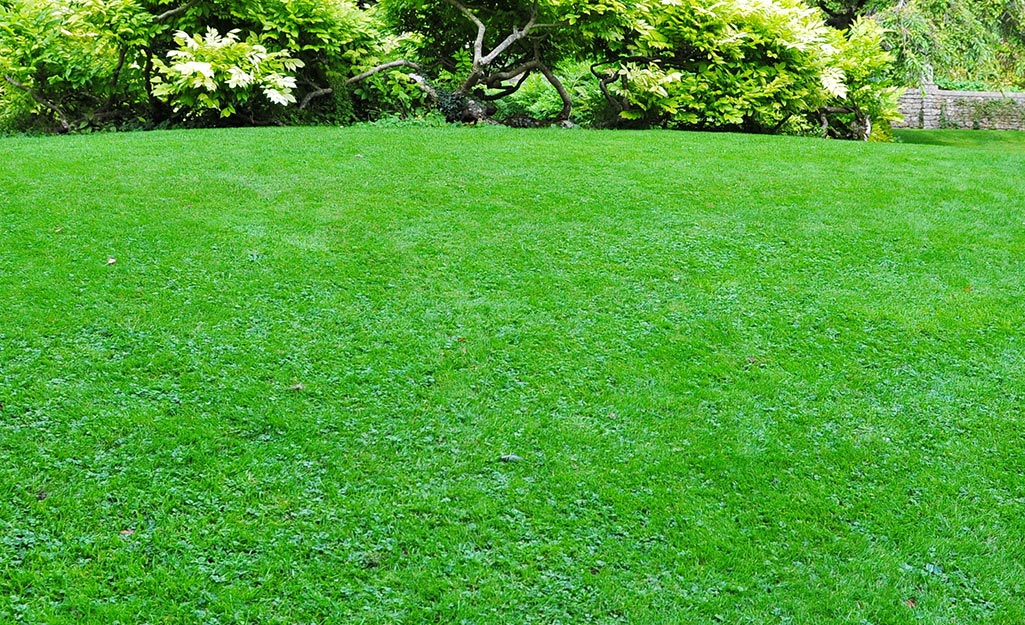
4. Alleviates Soil Compaction: Regular aeration breaks up compacted soil, providing space for roots to expand and grow, resulting in a stronger, more vigorous lawn.
5. Helps Thatch Breakdown: Aeration assists in the decomposition of thatch—the layer of organic matter between the soil and grass—by mixing it with soil and exposing it to microbes.
6. Encourages Root Development: Aerated lawns develop deeper root systems, which enhances the lawn’s overall drought tolerance and ability to survive stress.
7. Promotes a Greener, Lusher Lawn: As a result of improved air, water, and nutrient flow to the roots, aeration can lead to a fuller, greener, and more resilient lawn.
Unlock the Benefits of Aerated Lawns for Healthier Grass
Delving into the world of lawn care, we can’t overlook the profound impact that lawn aeration has on the vitality of your grass. This quintessential process involves creating small openings in the soil which permit air, water, and nutrients to penetrate the root zone of your grass, leading to a more robust lawn. The benefits of a well-aerated lawn are numerous, including enhanced root growth, improved fertilizer uptake, and better water absorption. Understanding the science behind soil aeration reveals that it mitigates soil compaction, allowing roots to expand and breathe. To successfully achieve an aerated lawn, one must utilize the appropriate aeration tools that delicately yet effectively puncture the turf to extract small cores of soil. These cores then decompose on the lawn’s surface, further contributing organic matter and aiding the breakdown of thatch. Lawn aeration, therefore, isn’t just a one-time affair but a catalyst for sustainable lawn health. By incorporating regular aeration into your lawn care regime, you’re not just maintaining your turf; you’re embarking on a journey towards the lush, green oasis that stands as a testament to meticulous nurturing and understanding the true essence of landscaping excellence.
How and When to Aerate a Lawn: Tips for Effective Aeration
Lawn aeration is a pivotal aspect of lawn care, essential for maintaining a healthy and vibrant yard. The optimal time to aerate your lawn often hinges on the grass type and the season. Cool-season grasses benefit most from aeration in the early fall or spring, while warm-season grasses are preferably aerated in the late spring or early summer. This timing ensures that the grass has ample time to heal and grow during its peak growing phase. The frequency of aeration should be dictated by the extent of soil compaction and the type of soil. Lawns with heavy clay soil or those subjected to high foot traffic should generally be aerated at least once a year.
The signs that your lawn may need aeration include water puddling on the surface after rain and a noticeable decline in turf vigor. Prior to aerating, ensure your lawn is moist enough, as attempting to aerate overly dry soil could be futile. After aeration, it’s pivotal to continue appropriate lawn care practices such as watering and fertilization to encourage recovery. If you’re uncertain about how to properly aerate your lawn, or don’t have the necessary tools, leveraging the expertise of Turf Medic can guarantee that your lawn is effectively aerated, paving the path to a healthier and more luxurious lawn.
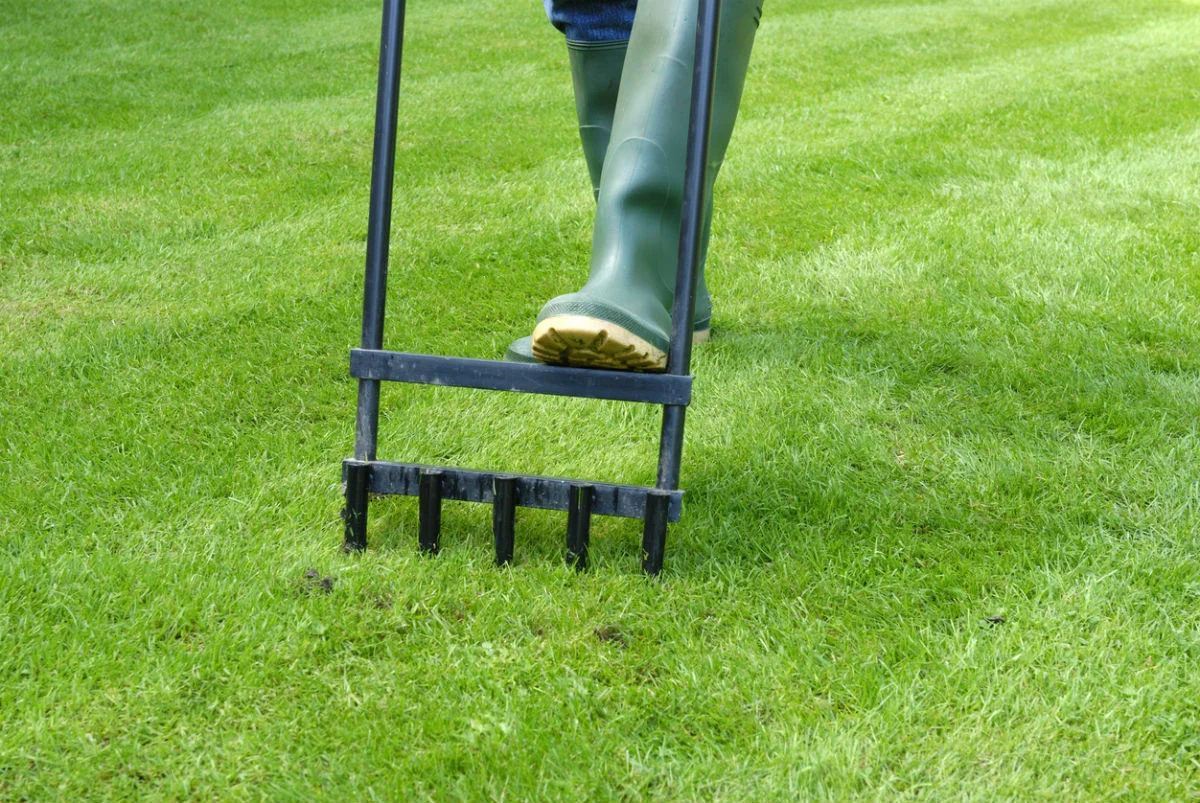
Identifying the Signs That Your Lawn Needs Core Aeration
Recognizing the need for core aeration in your lawn is crucial for maintaining a healthy and vibrant turf. If your lawn’s growth seems stunted or it’s appearing lackluster despite proper care, compaction could be the culprit. When the soil becomes compacted, it restricts the flow of air, water, and nutrients that are essential for robust grass roots. Observable signs that your lawn needs aeration include puddling of water in areas around the yard after rain or irrigation, which indicates that the compacted soil isn’t absorbing moisture efficiently. Another telltale sign is if the turf feels spongy or bouncy underfoot, which can mean that a thatch layer has developed, preventing essential elements from reaching the soil. Additionally, if your lawn endures heavy foot traffic or the use of equipment, this can lead to increased compaction over time. Noticing these signs early and opting for core aeration can be transformative for your lawn’s health. In essence, the process involves mechanically removing small plugs of soil and thatch to improve air exchange and facilitate deeper root growth. By being attentive to your lawn’s conditions, you can ensure it receives the vital care needed to thrive. Remember, when the signs of compaction are evident, it’s time to take action and give your turf the breath of life it needs with core aeration from Turf Medic experts.
Choosing the Right Lawn Aerator for Your Yard’s Needs
Stepping into the realm of lawn care, one must recognize the pivotal role that aeration plays in maintaining a healthy turf. However, the effectiveness of this practice hinges on choosing the right lawn aerator tailored to your yard’s specific needs. Whether you’re a seasoned landscaper or a green-thumbed homeowner, understanding the nuances of different aerators is crucial. A core aerator, for example, excels in alleviating soil compaction, allowing roots to breathe and nutrients to permeate effectively. With various models and sizes available, it’s important to select a lawn aerator that aligns with the scope and requirements of your green canvas. Yard size and soil type are primary considerations—compact, hand-operated tools work wonders for small patches, while extensive lawns might mandate a more robust, mechanical solution. Turf Medic espouses the wisdom that every blade of grass is a testament to care well-rendered, and having the right lawn aerator is a cornerstone of that philosophy. Take the time to choose wisely, ensuring your lawn remains a vibrant emblem of diligent lawn care and meticulous attention to detail.
Maximizing Grass Growth: Why Core Aeration is Essential
To truly maximize grass growth, core aeration is an essential step in lawn care that cannot be overlooked. This process allows air, water, and vital nutrients to penetrate the soil, ensuring that the roots of your lawn grass can breathe, grow and absorb everything they need to thrive. Over time, soil becomes compacted, restricting these essential elements from reaching the roots, and that’s precisely where core aeration comes in to save the day. By removing small plugs of soil
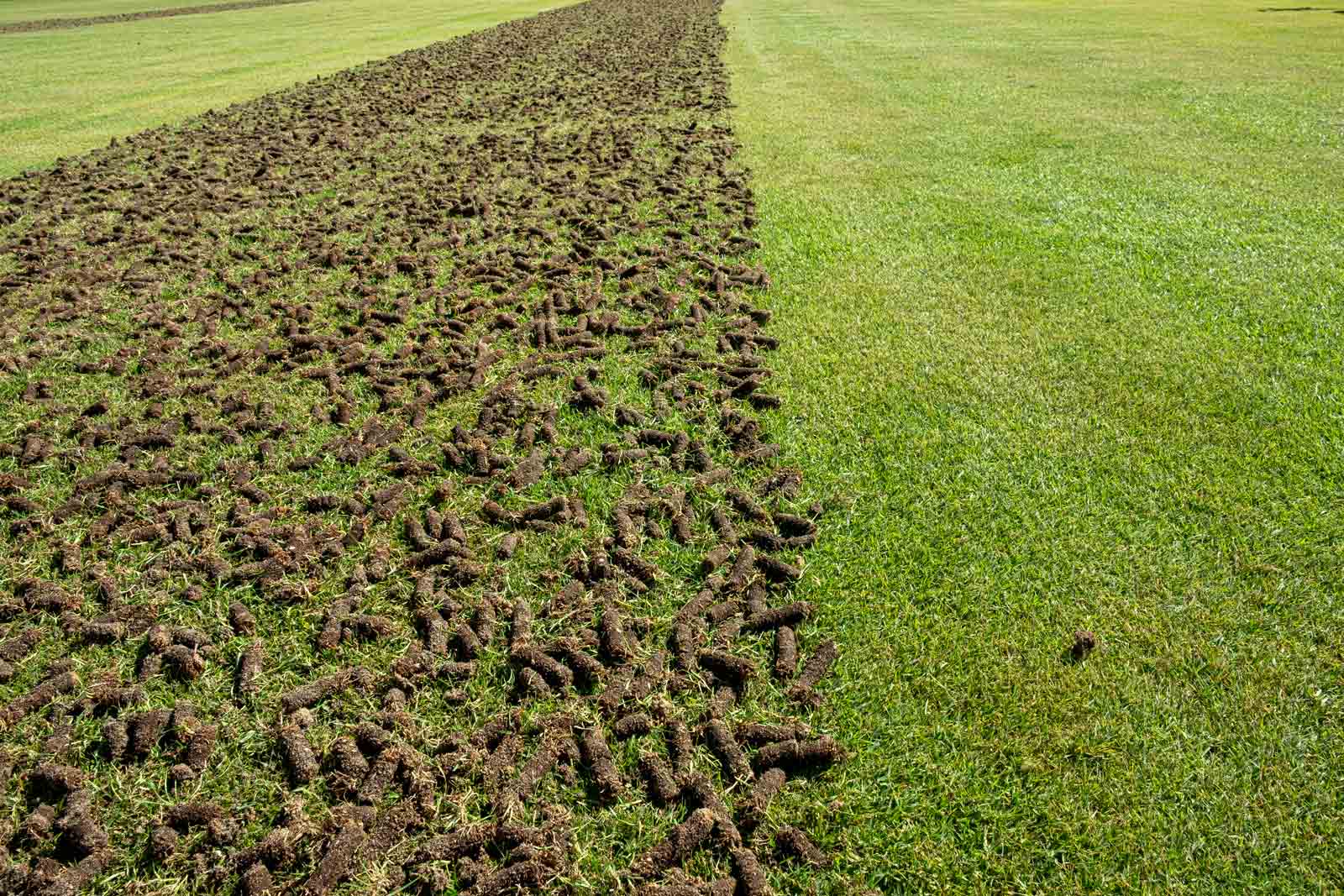
from your lawn, core aeration breaks up compacted layers, thus promoting better soil structure and fostering an optimal environment for grass growth. Maximizing the potential of your lawn demands attention to detail and understanding the science behind aeration. Core aeration isn’t just about poking holes; it’s a strategic move to enhance the entire ecosystem under your lawn. For the Turf Medic team, we recognize that this is a key service to offer, ensuring that your lawn stands out with its lushness and health. Effectively aerated lawns exhibit improved water drainage, enhanced resistance to pests and diseases, and, importantly, robust grass growth. Don’t underestimate the power of core aeration—it’s more than just maintenance; it’s a transformative measure for a vibrant and lively lawn.
Types of Lawn Aeration
Among the arsenal of lawn care practices, aeration is a critical step to ensuring a lush, healthy lawn. The types of lawn aeration can be primarily categorized into core, plug, and liquid aeration, each serving to alleviate soil compaction and improve the lawn’s breathability and nutrient uptake. Core aeration, often considered the most effective method, involves removing small ‘cores’ of soil from the lawn, creating pathways for air, water, and nutrients to penetrate the root zone. This type is particularly beneficial for heavy clay or compacted soils. Meanwhile, plug aeration is similar to core aeration but is sometimes mistaken as different; they are, in fact, synonymous, with ‘plug’ simply referring to the cores that are removed. Lastly, liquid aeration is a relatively newer technique that uses a solution to break down the soil structure and create space within the soil, providing a less invasive option. It’s important to understand the soil and lawn conditions to select the most appropriate aeration method, as this can dramatically enhance aeration’s impact on grass health.
Types of Soil Most Needing to Aerate
- Clay Soil
- Silty Soil
- Compacted Soil
- Heavy Loam Soil
- Soil with High Water Retention
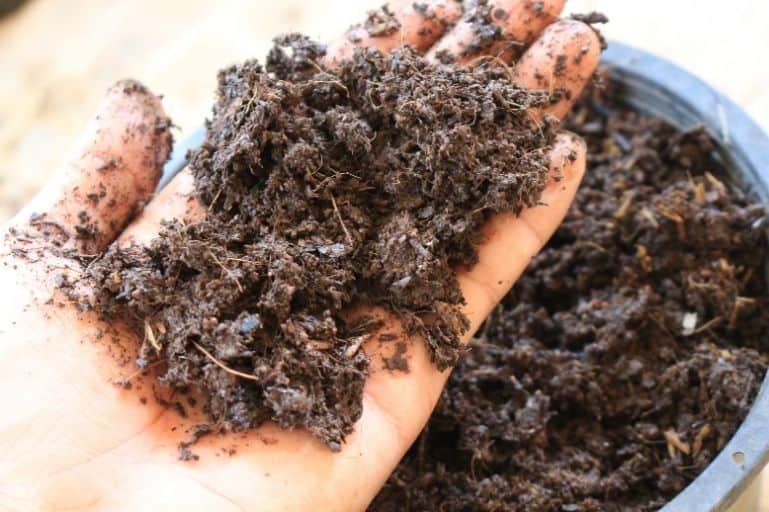
Hiring Professionals vs DIY Aeration
When considering the best approach to aerate, you have two main routes: hiring professionals or embarking on DIY aeration. Both options are viable, but they cater to different levels of expertise, time availability, and budget. Opting for professionals, like Turf Medic, means entrusting your landscaping needs to experts who are adept at tailoring aeration strategies to your lawn’s unique conditions. They employ a comprehensive landscaping guide to ensure every inch of your soil receives optimal treatment, thus enhancing outcomes.
DIY aeration, on the other hand, might appeal to those who prefer a hands-on approach. Though it requires a more significant time investment, it allows homeowners to connect with and understand their lawn personally. By following a detailed landscaping guide, you can identify the right tools and methods, fostering a deeper appreciation for the mechanics behind maintaining healthy grass. However, the learning curve can be steep, and without professional insight or the proper tools, you might not achieve the desired level of soil aeration, potentially compromising your lawn’s health.
In conclusion, whether you hire professionals like Turf Medic or decide on DIY aeration, the key is assessing your lawn’s needs against your abilities and resources. This understanding is crucial to ensure that, come rain or shine, your lawn remains a lush, aerated haven for outdoor living.
Planning Your Aeration Schedule: Best Time to Aerate
When it comes to effective care, planning your aeration schedule can make a significant difference. The best time to aerate typically aligns with your grass’s growing season, when the soil’s moisture and temperature conditions are optimal for recovery and growth. For most grass types, this means either spring or fall, when the weather is cool, and there’s plenty of moisture. Aerating during this time ensures that water, nutrients, and oxygen penetrate deeply into the soil, fostering robust root development. Moreover, it’s crucial to consider the soil’s condition prior to aeration. Irrigation or a light watering can soften the soil, making it easier for the aerator to extract cores and enhancing the effectiveness of the process. The proper season not only ensures better uptake of water and nutrients but also promotes a quicker healing time for the turf. By adding aeration to your ritual, you’re ensuring that your schedule aligns with the nature of your turf’s needs. Remember, though, that excess foot traffic or heavy machinery can compact soil, so it’s wise to aerate during a time when your yard is less active. Trust in Turf Medic to guide you on an aeration schedule that maximizes the health and beauty of your lawn.
The Essential Guide to Lawn Aeration
We hope this guide was helpful in showing when you should aerate your lawn.

Recent Comments